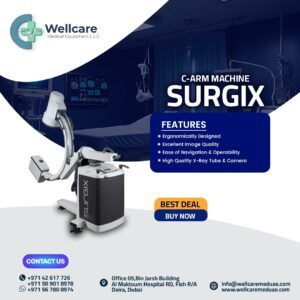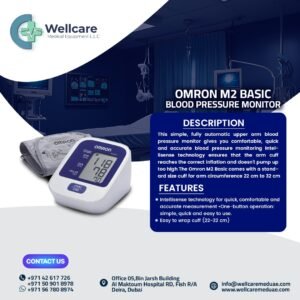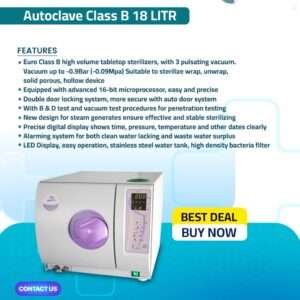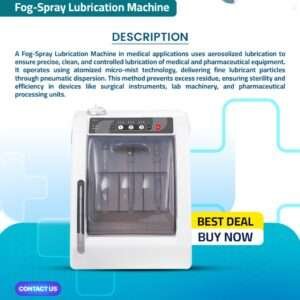Ophthalmology Equipment Supplier in United Arab Emirates
Ophthalmology equipment plays a crucial role in the healthcare landscape of the United Arab Emirates (UAE), supporting a growing demand for advanced eye care services amid an aging population and an increasing prevalence of eye-related conditions. As the UAE continues to expand its healthcare infrastructure, particularly within specialized medical fields, the need for high-quality ophthalmology equipment has become increasingly important. This includes devices such as slit lamps, optical coherence tomography (OCT) machines, phoropters, fundus cameras, and advanced surgical instruments, all of which are vital in diagnosing, monitoring, and treating various eye conditions, from common refractive errors to complex retinal diseases. The UAE’s high standards for healthcare, coupled with significant investments in advanced medical technologies, make it essential to import ophthalmology equipment that meets stringent international quality and safety standards. This imported equipment enables healthcare providers to offer early detection and precise diagnosis, reducing the progression of vision impairment and supporting better treatment outcomes. In particular, diseases such as diabetic retinopathy, age-related macular degeneration, glaucoma, and cataracts—which are increasingly common due to lifestyle shifts and longer life expectancy in the UAE—require sophisticated diagnostic tools and surgical equipment. Advanced ophthalmology devices allow specialists to detect subtle changes in ocular health, provide minimally invasive treatments, and ultimately help in preserving vision and improving the quality of life for patients. Furthermore, the UAE’s strategic location as a healthcare hub in the Middle East means it attracts patients not only domestically but also from neighboring countries. High-quality ophthalmology equipment is essential to sustain this influx of medical tourism, as patients seek cutting-edge treatment options for complex eye conditions. By investing in advanced ophthalmic technology, UAE healthcare facilities are better positioned to deliver world-class eye care services. This aligns with the UAE government’s Vision 2021 and other national healthcare initiatives, which aim to improve health outcomes and position the UAE as a leader in specialized medical fields. Hence, importing ophthalmology equipment is not just about meeting immediate clinical needs but also about building a sustainable, long-term infrastructure for eye care in the region, supporting both local and regional patient populations.
Well Care Medical Equipment LLC offers a wide range of ophthalmology equipment to support diagnostic, therapeutic, and surgical needs in eye care. Below are some of the key types of ophthalmology equipment they may provide:
Slit Lamps: Essential for detailed examination of the anterior segment of the eye, including the cornea, iris, and lens. Slit lamps are critical for diagnosing conditions like cataracts, glaucoma, and corneal abnormalities.
Ophthalmoscopes: Used to examine the interior structures of the eye, particularly the retina, optic nerve, and blood vessels. These tools are vital in detecting retinal diseases, diabetic retinopathy, and macular degeneration.
Fundus Cameras: High-resolution cameras that capture detailed images of the retina, aiding in the diagnosis and monitoring of retinal diseases. They are frequently used for tracking changes in eye health over time.
Optical Coherence Tomography (OCT): Non-invasive imaging technology that provides detailed cross-sectional images of the retina. OCT is crucial for diagnosing macular degeneration, diabetic eye disease, and glaucoma.
Phoropters: Instruments used to measure refractive errors and determine appropriate prescriptions for corrective lenses. Phoropters are commonly used in vision exams for glasses and contact lenses.
Autorefractors and Keratometers: Autorefractors quickly assess refractive errors, while keratometers measure the curvature of the cornea. These devices are useful in prescribing lenses and for pre-surgical evaluations, particularly in LASIK and other corneal procedures.
Tonometers: Used to measure intraocular pressure (IOP) and diagnose glaucoma. Tonometers help detect elevated eye pressure, a major risk factor for glaucoma.
Visual Field Analyzers: These devices assess the full field of vision and help diagnose glaucoma, optic nerve disorders, and other visual field abnormalities.
A-Scan and B-Scan Ultrasound: A-Scans measure the eye’s axial length, useful in cataract surgery planning, while B-Scans provide cross-sectional images of the eye’s structures, helpful in diagnosing retina and vitreous body conditions.
Laser Systems: These include YAG lasers for capsulotomy and iridotomy and photocoagulation lasers for retinal treatments. Laser systems are essential in various therapeutic procedures, such as treating diabetic retinopathy and certain types of glaucoma.
Ophthalmic Surgical Microscopes: Provide magnification and illumination for intricate eye surgeries, allowing surgeons to perform precise procedures, particularly in cataract and retinal surgery.
Corneal Topographers: Measure the curvature and shape of the cornea, useful for fitting contact lenses, diagnosing corneal diseases, and planning refractive surgeries.
Endothelial Cell Counters: Measure the density and health of endothelial cells in the cornea, helping monitor corneal health, especially before surgeries like cataract removal.
By offering this comprehensive range of ophthalmology equipment, Well Care Medical Equipment LLC supports eye care professionals in delivering high-quality, specialized care for a wide variety of eye conditions and vision needs.
Well Care Medical Equipment LLC plays an essential role in the UAE’s healthcare sector, particularly by providing high-quality medical equipment, including specialized ophthalmology devices, across all emirates. In a country known for its rapidly advancing healthcare infrastructure, Well Care Medical Equipment LLC is integral in ensuring that healthcare providers have access to advanced, reliable technology needed to deliver top-tier medical services. Here are some key aspects of its importance across the UAE:
Enhanced Accessibility to Advanced Medical Technology: Well Care Medical Equipment LLC ensures that healthcare providers, from large hospitals to private clinics, have access to high-quality ophthalmology and general medical equipment throughout the UAE. By supplying specialized equipment such as slit lamps, OCT machines, and fundus cameras, Well Care empowers eye care centers and hospitals to offer comprehensive diagnostic and treatment services. This accessibility is especially valuable in smaller emirates, where access to specialized medical devices may otherwise be limited.
Supporting National Health Initiatives: The UAE government has set ambitious goals for its healthcare sector under initiatives like Vision 2021 and the National Agenda, aiming to elevate healthcare standards and enhance service quality. Well Care Medical Equipment LLC aligns with these objectives by supplying equipment that meets international quality standards, allowing healthcare facilities to maintain high service standards and meet the regulatory requirements of these programs. By providing essential medical tools, the company helps healthcare providers meet patient demand and supports the UAE’s drive toward healthcare excellence.
Promoting Early Detection and Preventive Care: With the UAE experiencing a rise in lifestyle-related health issues such as diabetes, which can lead to serious eye complications, there is an increasing need for early detection and preventive care. Well Care Medical Equipment LLC provides equipment essential for early diagnosis and intervention, such as tonometers for glaucoma screening, OCT machines for retina assessment, and visual field analyzers. Early access to these tools enables clinicians to manage conditions like diabetic retinopathy and glaucoma before they progress, which is crucial in preventing severe vision loss among at-risk populations.
Boosting Medical Tourism and International Appeal: The UAE is a regional hub for medical tourism, attracting patients from across the Middle East, Asia, and beyond. With Well Care Medical Equipment LLC supplying world-class ophthalmology and other specialized medical equipment, healthcare providers can offer treatments comparable to those in leading international facilities. This capability not only bolsters the UAE’s reputation in healthcare but also strengthens its position as a preferred destination for patients seeking specialized care, thereby supporting the country’s economy and healthcare profile.
Training and Knowledge Transfer: Well Care Medical Equipment LLC doesn’t just supply equipment; it also often provides training, installation, and maintenance support, ensuring that healthcare providers can make full use of their advanced technology. This knowledge transfer is vital in maintaining consistent, high-quality patient care and enables UAE healthcare professionals to stay updated on the latest technologies. It also reduces downtime associated with equipment maintenance or repairs, thus improving the continuity of care provided by hospitals and clinics.
Empowering Diverse Healthcare Facilities: The UAE has a variety of healthcare providers, ranging from large hospitals to smaller, specialized clinics. Well Care Medical Equipment LLC serves all of these, ensuring that medical facilities in every emirate have access to the specific equipment they need. This inclusive approach supports a balanced distribution of healthcare resources across the UAE, helping underserved regions access the same level of care as major metropolitan areas.
In summary, Well Care Medical Equipment LLC is invaluable to the UAE’s healthcare system. By providing reliable, high-quality medical equipment and supporting healthcare providers with training and maintenance services, Well Care helps ensure that all emirates offer consistent, cutting-edge healthcare services, contributing to the UAE’s overall health and wellness agenda.
How can I purchase medical equipment from Well Care?
You can contact Well Care directly through their sales team or website to request quotations, catalogs, and purchase assistance.




